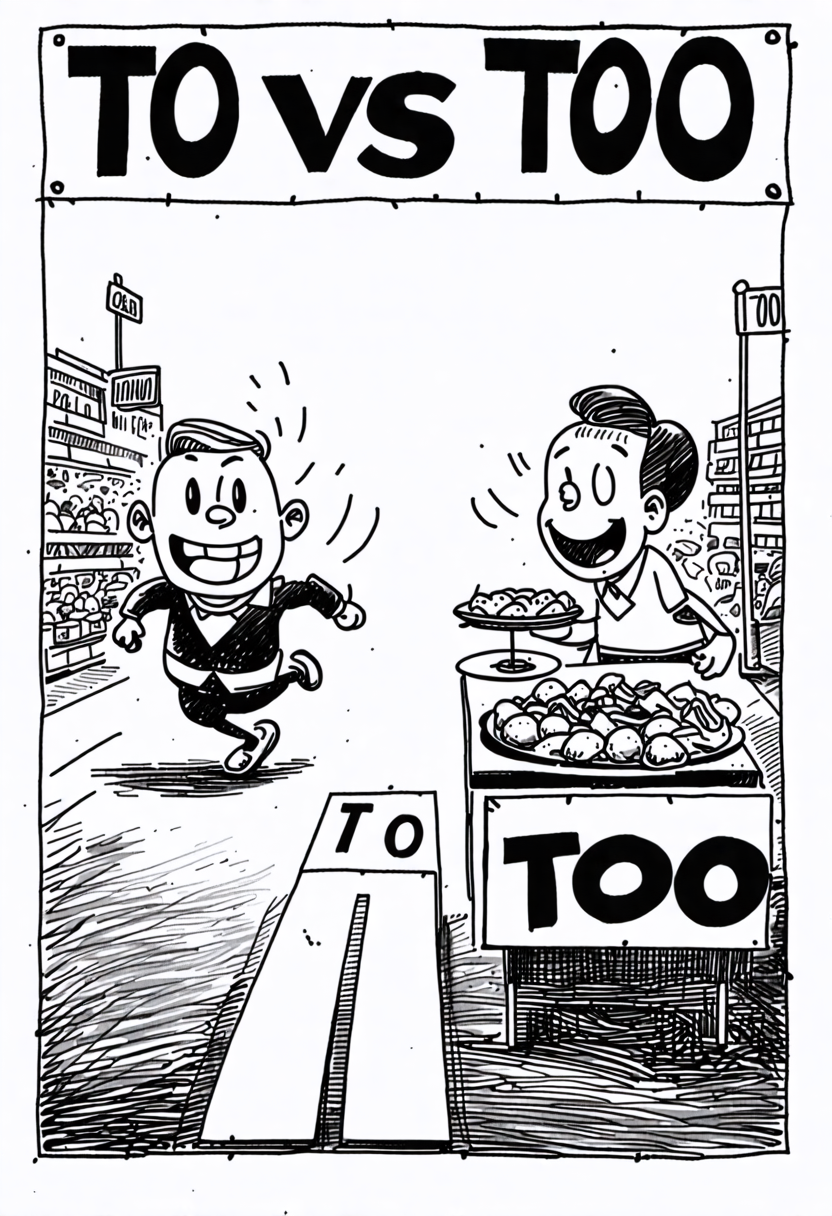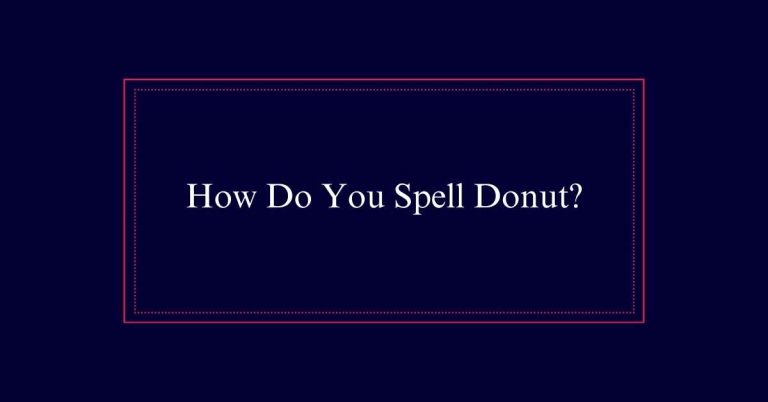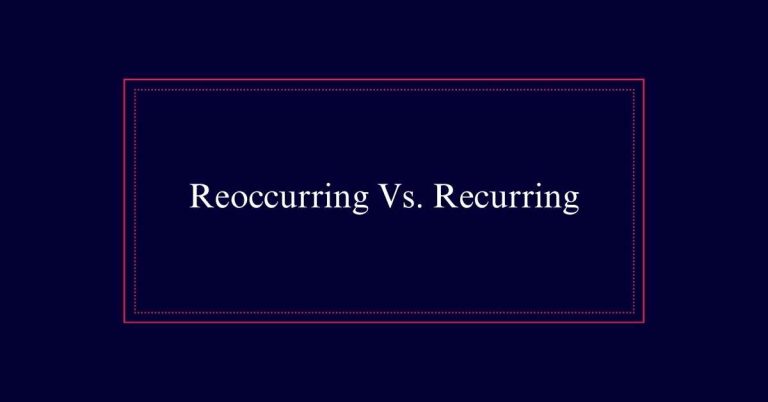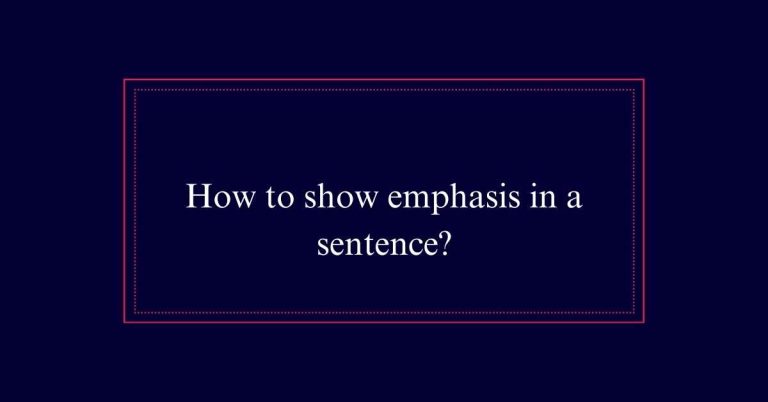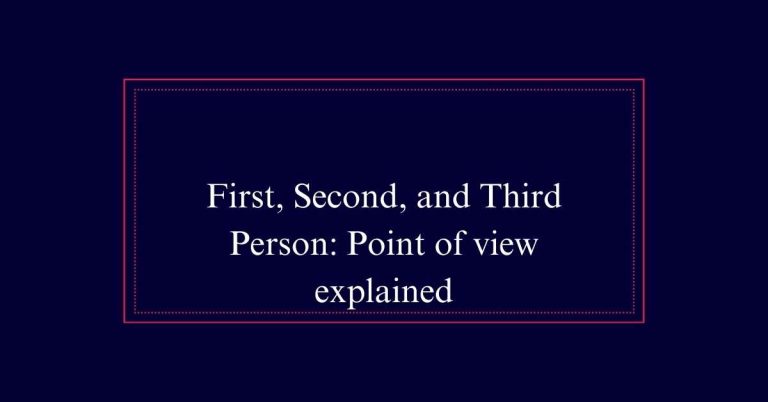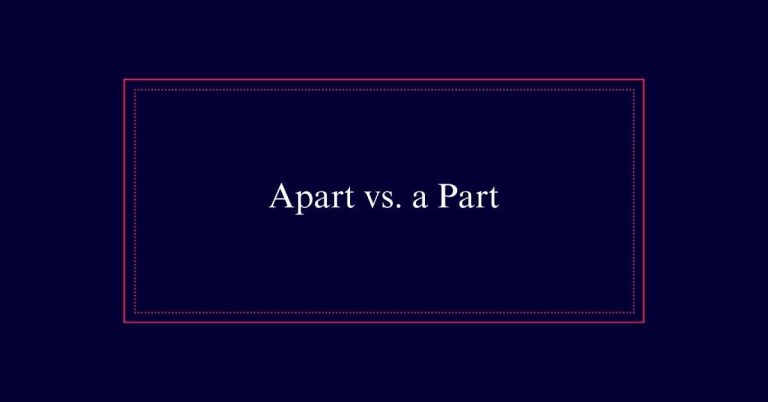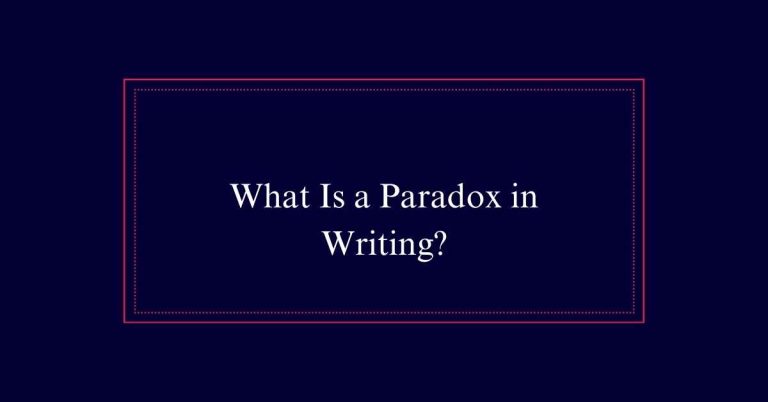To Vs. Too
‘To’ acts as a preposition indicating direction, purpose, or range, such as ‘to the park’ or ‘from 9 to 5.’ It also forms infinitives before verbs, like ‘to read.’ In contrast, ‘too’ is an adverb meaning ‘also’ or ‘excessively,’ as in ‘too much’ or ‘I want to go too.’
Understanding ‘To’
To understand the correct usage of ‘to,’ it is essential to recognize its role as a preposition indicating direction, goal, or movement.
The word ‘to’ is versatile. It often precedes a verb to form the infinitive, such as in ‘She wants to learn.’ It also shows direction, as in ‘They walked to the park.’
‘To’ can indicate a range or period of time, like ‘The meeting is from 9 to 11.’ Additionally, it expresses relationships and attachments, for example, ‘This gift is for you.’
Defining ‘Too’
Too’ is an adverb that signifies excess, addition, or similarity in a sentence. When used to indicate excess, it suggests something is beyond what is desirable or acceptable, as in ‘The coffee is too hot.’
For addition, ‘too’ means also or in addition, such as in ‘She wants to come too.’ Finally, it shows similarity, like in ‘Are you going too?’
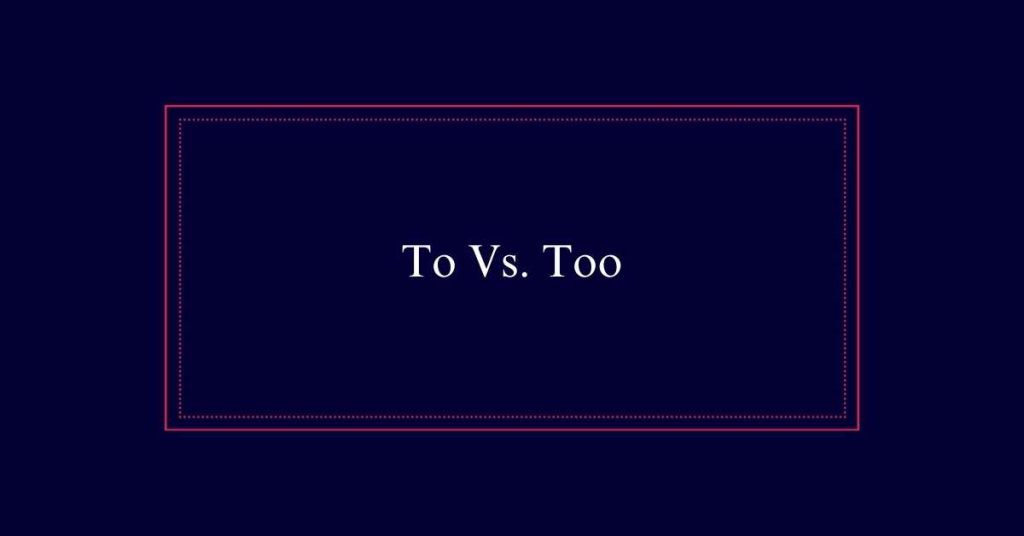
Using ‘too’ correctly clarifies meaning and guarantees precise communication. Misusing ‘too’ can lead to confusion and misinterpretation. Remember, ‘too’ always deals with extremes or inclusion, while ‘to’ serves different grammatical purposes.
Direction and Goal
While ‘too’ emphasizes excess or inclusion, ‘to’ often indicates direction or goal in a sentence. This preposition can guide us in understanding movement or purpose.
For example, ‘She went to the store’ shows the direction of her movement. Similarly, ‘He aspires to be a doctor’ highlights his goal.
‘To’ is also used in relationships, such as ‘This gift is to you,’ showing possession or attachment. It can indicate a range, like ‘from 9 AM to 5 PM,’ demonstrating a period.
Infinitive Verbs
Infinitive verbs use the base form of a verb, often preceded by ‘to’. This form is crucial in English grammar for expressing purpose, intention, or action. Infinitive verbs can function as nouns, adjectives, or adverbs in a sentence.
Here are some key uses:
- As a subject or object: ‘To read is enjoyable.’
- To express purpose: ‘She went to the store to buy milk.’
- After certain verbs: ‘He wants to learn French.’
Possession and Attachment
In addition to its use with infinitive verbs, ‘to’ also plays a key role in indicating possession and attachment. It connects people, objects, and ideas, showing a relationship between them.
For instance, in the sentence ‘This gift is to my friend,’ ‘to’ shows the gift’s intended recipient. Similarly, ‘The key to the house’ indicates the key’s association with the house. ‘To’ can also link actions to their results, such as ‘She dedicated her book to her parents.’
Time Periods
‘To’ is often used to indicate a specific range or period of time. This preposition helps establish the duration or span between two points. For instance, in the phrase ‘from Monday to Friday,’ it specifies the start and end of the timeframe.
Here are some examples of its usage:
- ‘The meeting will be held from 2 PM to 4 PM.’
- ‘The exhibition runs from June 1 to July 15.’
- ‘Office hours are from 9 AM to 5 PM.’
Using ‘to’ within this framework helps convey clear information about the time period in question. It bridges the starting point and the ending point, ensuring the reader understands the exact duration.
Addition and Excess
When indicating addition or excess, the adverb ‘too’ plays a crucial role in shaping the meaning of a sentence. ‘Too’ can mean ‘also’ or ‘as well.’ For example, ‘She wants to come too.’ It conveys that she wants to be included.
Additionally, ‘too’ can denote excess. When something is beyond what is needed or desired, ‘too’ is appropriate. For instance, ‘The coffee is too hot.’ This implies the coffee’s temperature is higher than preferred.
Using ‘too’ correctly guarantees clear communication. Misusing it can confuse the reader. Remember that ‘too’ always adds or emphasizes excess, while ‘to’ directs or indicates a goal.
Similarity in Context
‘Too’ is used to show similarity, often implying that one thing is like another in some aspect. For instance, if someone says, ‘I want to go to the park too,’ they are expressing that their desire is the same as someone else’s. This usage helps convey shared interests or actions among individuals.
This usage helps create connections between people and ideas. It is an effective tool for highlighting commonalities and shared experiences, making communication clearer and more relatable.
Here are some examples demonstrating this concept:
- ‘She likes ice cream too.’
- ‘He can play the guitar too.’
- ‘They are attending the meeting too.’
Common Mistakes
Many writers often confuse ‘to’ and ‘too’ due to their similar pronunciation. This mix-up can lead to errors in writing. ‘To’ is a preposition used for direction or purpose, as in ‘I am going to the store.’
In contrast, ‘too’ is an adverb meaning also or excessively, such as ‘She is coming too’ or ‘The coffee is too hot.’
Common mistakes involve using ‘to’ when ‘too’ is needed and vice versa. For example, writing ‘I want to go too the park’ instead of ‘I want to go to the park.’
To avoid these errors, remember that ‘too’ often implies addition or excess.
